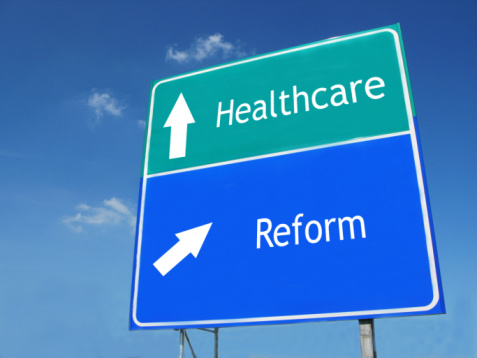
Up to 10 percent of California’s 40 million residents will not have health insurance after national health care reform begins in 2014, according to new numbers released from University of California, Berkeley last week.
Those numbers, health officials say, run contrary to the popular belief that nearly everyone will be covered by insurance in two years. That’s when the Affordable Care Act, passed into federal law in 2010, takes full effect. As a result, doctors and clinics that traditionally provide care to the uninsured are working to make sure the money to treat those patients does not disappear.
The fear, said Peter Long, president and CEO of Blue Shield of California Foundation, is that funding from states and nonprofits who now help pay for uninsured patients will dry up in 2014. When the Affordable Care Act is fully in place, nine out of 10 California residents younger than 65 should be covered, according to the UC Berkeley study. Without the act, about 84 percent of those patients would be covered.
As donors shift their contributions to other causes, those clinics could be left in a lurch.
“Trying to buy insurance for 3 million is expensive. You can’t have a foundation pay for that,” Long said.
Turning patients away also is not an option, Long said, as doctors and clinics are required by law to treat all patients, regardless of whether patients can afford the care.
Of those who will not be covered, according to the study:
- 27 to 33 percent are undocumented U.S. residents who do not qualify for health insurance under the Affordable Care Act.
- 27 to 31 percent are legal U.S. residents who qualify for state or federal health care programs but are not enrolled.
- 13 to 20 percent are legal U.S. residents who qualify for government subsidies to help them buy health insurance. However, these patients have not purchased coverage.
- 22 to 27 percent are legal U.S. residents who do not qualify for government subsidies to help them buy health insurance and have not purchased coverage.
Contrary to stereotypes, health officials said, the majority of those without health insurance would not be undocumented residents. Instead, many are expected to be legal residents who feel they can’t afford health insurance, despite government subsidies and other efforts to keep costs down.
“There is a group of people who, for affordability purposes, are going to fall through the cracks,” said Ken Jacobs, chair of the UC Berkeley Center for Labor Research and Education, which authored the study. “For various reasons, they fall through the programs and don’t have an affordable option.”
Others will buck the system and ignore the mandate to buy coverage, Long said. He expects the public to have little sympathy — and desire to help — when those residents get sick, he said.
“There’s a mandate, that’s huge,” Long said. “We expect most people to have coverage and if you don’t, that’s on you. The perception of it will change. That’s the bigger issue.”
Health officials said they expect community and public clinics to treat the majority of what’s being called the “residual uninsured.” Meanwhile, those same clinics are expecting a surge in patients as more patients do carry coverage and seek out annual check-ups, delayed treatment and other care.
But Long said it will become more difficult for health providers to raise charges for other patients to cover costs of treating the uninsured, as often happens now. As health insurance companies compete on the open market for customers, Long said he expects them to tolerate fewer additional charges from providers that would force them to raise rates.
In addition, Long said, insurers already are paying to help set up the exchange where customers can buy coverage.
“Just $10 (in premium costs) will make a difference on whether you get a customer,” Long said. Insurance providers “aren’t going to want to have $15 to $100 loaded in to take care of some uninsured patient.”
At Gardner Family Health Network, CEO Reymundo Espinoza said the worst-case scenario is that the burden of uninsured patients could force layoffs if outside dollars disappear. The Gardner network includes seven Santa Clara County clinics and serves about 50,000 low-income residents.
“That’s the big fear,” Espinoza said. “Its really an economic issue. If you can’t get the funding, then you reduce the level of service.”
In Santa Clara County, where public medical clinics treat more than 260,000 patients each year, officials said they would reach out to donors with word that their dollars still are needed.
The message is especially important as state and federal funds that help county hospitals soon could be diverted to pay for expanded health insurance coverage, said Rene Santiago, deputy Santa Clara County executive.
“We’ll work with not only private foundations but individuals, contributors and donors and the general community to convey the message as well as help explain why this is so necessary,” Santiago said.
Raising awareness and money to help the uninsured, Espinoza said, is nothing new to Gardner and other community clinics.
“It’s business as usual,” Espinoza said. “We’ve been doing that since 1968.”





